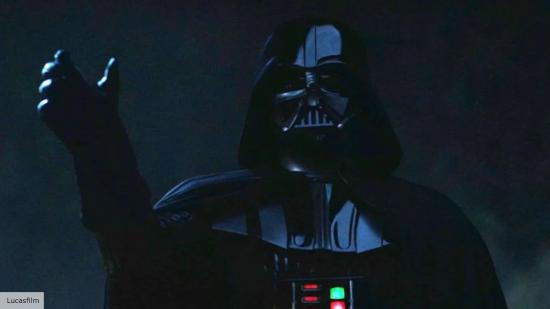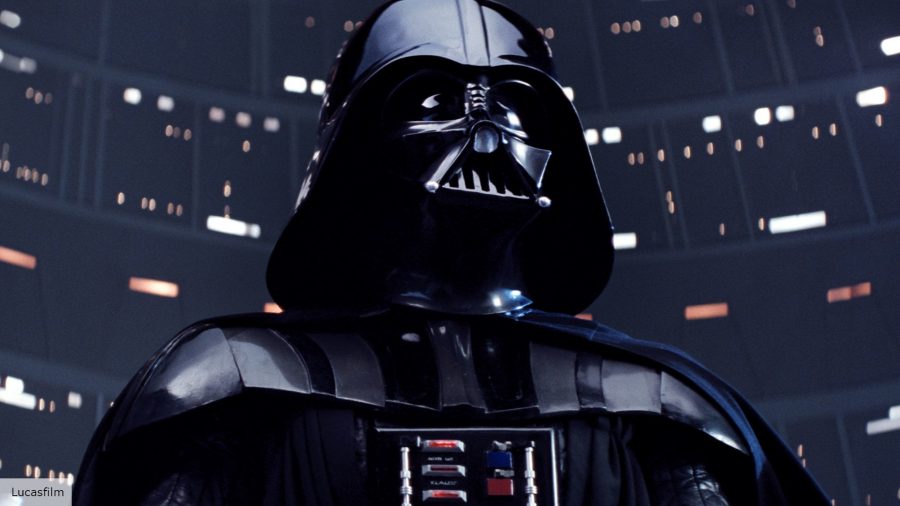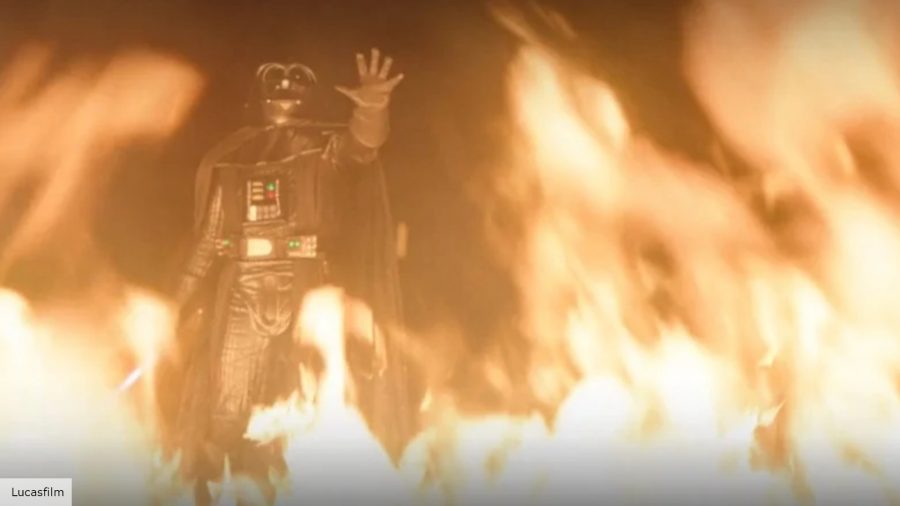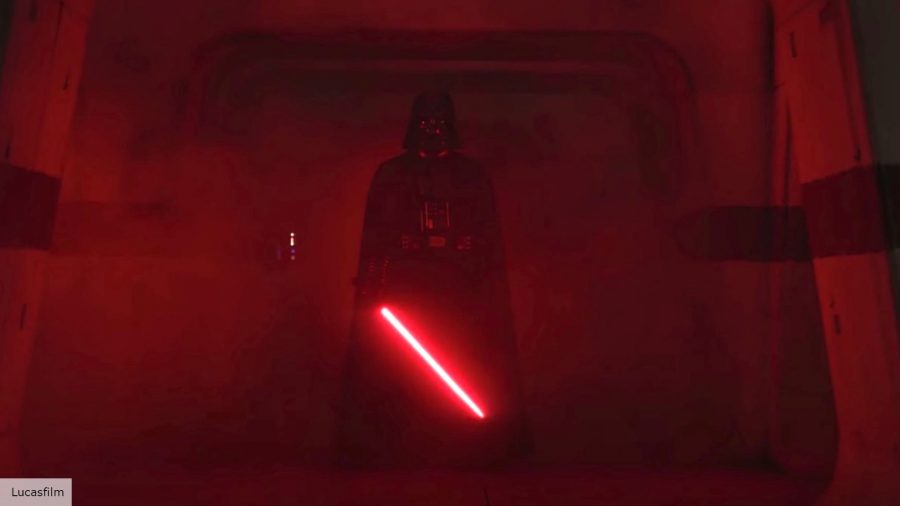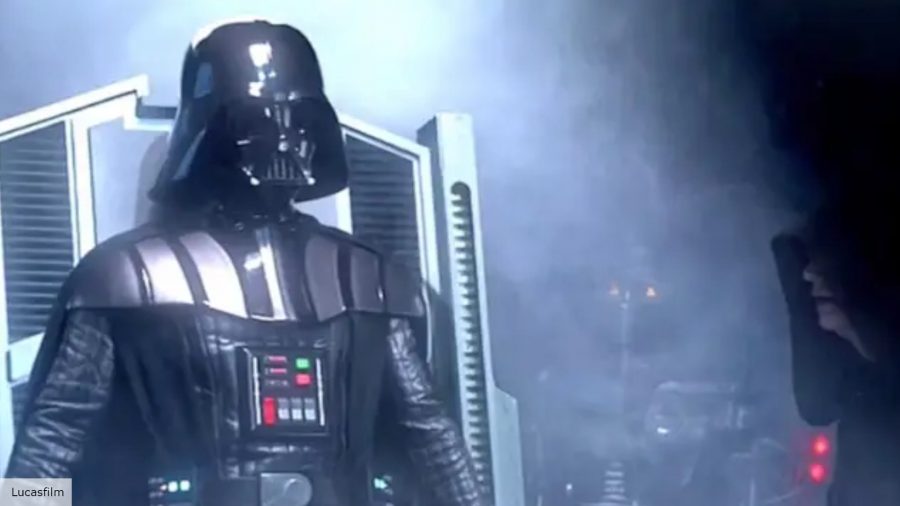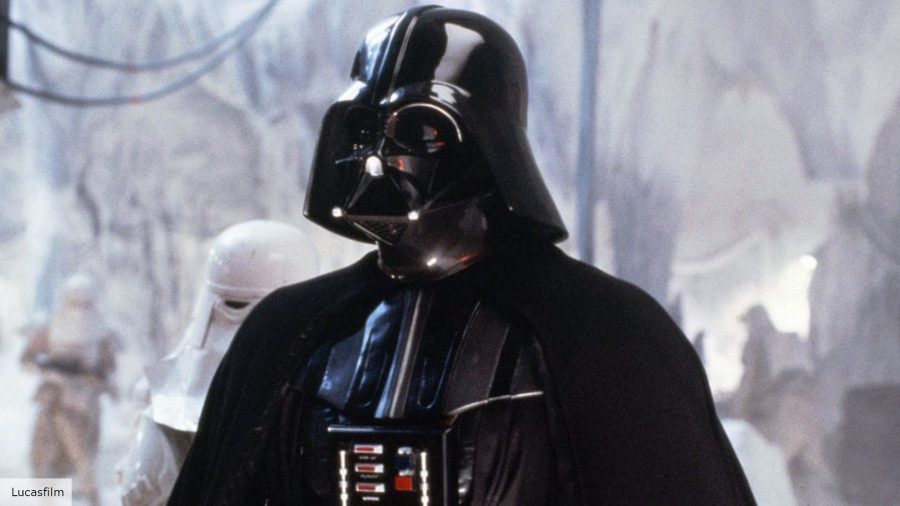Cloaked in ebony black armour, his face obscured by a skull-shaped mask, Darth Vader has always cut an imposing figure. Yet, since Disney bought the rights to Star Wars, the Dark Lord of the Sith has undergone a fascinating change. He’s become more dangerous, more threatening, and, dare we say, more evil.
Now Vader’s always been a Grade-A bastard. Just ask the people of Alderaan what they think about the Emperor’s right-hand man. Oh, wait, you can’t because Vader had their planet destroyed. Yet genocide aside, there’s definitely been a change in the way Vader’s portrayed, and it began when the House of Mouse got its white gloves on George Lucas’s favourite toys.
In the Original Trilogy, Vader’s characterisation is surprisingly inconsistent. In A New Hope, Vader is portrayed first as Tarkin’s vicious attack dog. Sure, he’s a brutal murderer who enjoys choking out Imperial officers who dare question his “sad devotion to that ancient religion”, yet when Tarkin tells him to stop strangling people with his mind, he does as he is told.
By the time of The Empire Strikes Back, Vader is off the leash – presumably because the guy holding it was atomised when the Death Star went boom – and at his most brutal.
The former Jedi Knight’s actively plotting to turn Luke to the Dark Side so they can overthrow the Emperor, having people tortured, and he gets back to his favourite hobby – asphyxiating people from great distances. Still, there’s a kernel of reason that we see in him even pretending to negotiate with Lando Calrissian.
Unfortunately for Vader, his plot comes to nothing when we next see him in Return of the Jedi. Cinema’s most iconic bad guy is a shadow of his former self. Wracked by doubt, he’s weakened and apathetic – only finding his inner strength at the film’s climax when he finally fulfils his destiny as the chosen one, and he yeets the Emperor into a conveniently located bottomless pit.
Overall, the picture painted of Vader in the Original Trilogy is that he’s a powerful zealot and a killer, but a passive one. We see he listens to authority – whether it be Tarkin or the Emperor – and after Luke rejects his offer on Cloud City, he seems pretty much resigned to the fact that Palpatine will replace him with his progeny.
This is not the Vader of the Disney era. No, like Palpatine himself, Mickey and his friends have taken the carcass of Vader and rebuilt him. Disney’s Vader is a malicious, leather-clad juggernaut who tears through his enemies with all the sensitivity of an erupting volcano. The most obvious demonstration of this is the terrifying scene in Rogue One where he massacres the unfortunate rebels with brutal and shocking efficiency.
There are no speeches about squashing the Rebel Alliance, offers of mercy, or orders to bring people in alive. Instead, Vader is portrayed as a murderous monolith against which no man could ever hope to survive. Sure enough, the Sith Lord makes merciless short work of the soldiers who dare to stand in his way, in a moment which feels like something out of a Star Wars horror movie.
Arise, Lord Vader: Best monster movies
Vader doesn’t need his lightsaber out to be scary. When Orson Krennic tries to pull a Tarkin on Vader and bring him to heel, he quickly learns how the Emperor’s apprentice cannot be ordered around by lesser men.
It’s not just in Rogue One, though, that Vader is changed. In the TV series Obi-Wan Kenobi, Vader is once again presented as an insurmountable obstacle that our hero cannot (at the time of writing) overcome.
We watch on as Vader stalks the streets of Maputo and see that this is not the man who negotiated a deal with Lando. He is a stone-cold killer whose first thought upon arriving in a village where he believes Kenobi may be hiding isn’t to talk, but to start breaking necks.
Then, when he finally has Kenobi in his clutches, there is no elaborate lightsaber duel, no promise of righting the wrongs of Mustafar in honourable combat like their eventual duel on the Death Star. No. Instead, Vader wants to make his former friend suffer and seems to delight in putting him through the same agonies he endured when he was left to burn on the lava fields of Mustafar.
This overwhelming incarnation of Vader has bled into comic books and video games as well. In the recent Marvel comics about Vader, he’s like the Terminator, implacable, undefeatable, and lacking even the slightest hint of empathy. Comic book Vader is capable of putting even his closest allies into airlocks and plotting from the very beginning to overthrow the Emperor. In the game Fallen Order, Vader is an unstoppable final boss against which there is only one option – run.
It’s fascinating how the Vader of the Original Trilogy, who, as we said, was powerful but by no means invincible, has become this undefeatable behemoth. But there are two understandable reasons for the change. The first is probably the most important and is a power that makes the ability to destroy a planet look insignificant in comparison. We’re talking about nostalgia.
Don’t worry; this isn’t turning into a rant about how nostalgia is strangling everything. No, this time, nostalgia has done some good. You see, the people writing Star Wars movies today are the people who grew up knowing Darth Vader was pretty much the greatest villain in the history of cinema.
As such, it makes sense why, now they’re writing him, they want to elevate him further, making him more powerful, evil, and dangerous. After all, who doesn’t want to see their favourite characters looking cool (Editor: did you just imply being evil is cool?). In Rogue One and Obi-Wan Kenobi, Vader is written like a childhood nightmare come to life, and it wouldn’t surprise me if those working on the shows weren’t channelling a little bit of their own childhood awe into this incarnation of Vader.
I am your father! Best plot twists
Secondly, there’s an argument to be made that Vader needed a refresh after the Prequel Trilogy. Now we don’t want to get into the nitty-gritty of why Vader didn’t work in the prequels but let’s be honest, he didn’t. Part of it was that demystifying a character like Vader would always be a mistake. He was simply more intriguing when we didn’t know the specifics of his injuries and fall from grace, but more than that, Lucas botched it.
Anakin, later Vader, is too whiney, too self-entitled, and too petulant to be truly likeable. As such, his turn to the Dark Side is less of a tragedy and more of a moment of relief. Because soon enough, the severity of Vader’s injuries will mean he’ll stop moaning like Tommy Wiseau about how “everybody betray me”.
Then in the closing moments of the prequels, Vader gets one final humiliation. Moments after Anakin is sealed in his iconic armour and Vader lets out his first iconic rasping intake of breath, he lumbers off the surgeon’s table with all the grace of a drunk toddler in need of a change and asks where his bride is.
As the Emperor tells him she’s dead, Vader lets out an agonised “noooo” that was presumably meant to be dramatic but ended up a favourite gif of shitposters worldwide. How embarrassing.
More machine than man: Best science fiction movies
Yes, Disney needed to rehabilitate Vader after the prequels because the version presented to us in Revenge of the Sith was not the one you want to leave audiences with. It just so happens that they’ve dialled all of his attributes up to eleven in the process, which isn’t necessarily bad.
The new Vader is far more threatening and hissable than the original trilogy version, and that’s great. Even better, you can marry the two incarnations in your head through the benefits of retroactive continuity. The version we see in Episodes 4-6 is simply an older, wearier Vader who’s mellowed in his middle age and less prone to violence.
Even his apathy in the finale makes sense. He’s given up because his attempt to turn Luke to the Dark Side was the last roll of the dice, and there’s no point in trying anymore. He knows Palpatine will get rid of him soon, and he’s utterly resigned to it as all Sith are.
Still, watching Darth Vader in his prime has been an exquisite and cathartic experience, and we can’t wait to see how far Anakin fell after his lava bath.
If you love a galaxy far, far, away, check out our Star Wars movie ranking and you can get the latest on Vader’s adventures by watching Obi-Wan Kenobi on Disney Plus.
